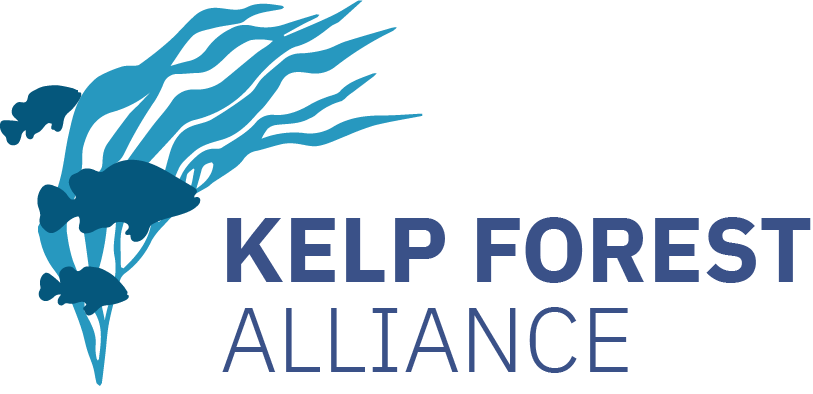Key takeaways
This project involved stakeholders from NGOs, the fishing sector, government, community groups, and academic institutes, which enabled a highly coordinated and systematic project to reduce purple sea urchin numbers.
Urchin culling activities, in conjunction with a natural mass urchin mortality event, have led to kelp restoration on ~23 ha of urchin barrens over seven years.
Background
The Palos Verdes Peninsula (PVP) is a large rocky headland separating the Santa Monica and San Pedro bays in southern California, USA. Pronounced declines in giant kelp (Macrocystis pyrifera) canopy have been identified along PVP since the late 1940s 1 2. In total, this region lost ~80% of its kelp canopy in the latter half of the 20th century 3 4. Surveys conducted in the late 1960s found a near total absence of adult giant kelp 5 6. Subsequent surveys conducted from 2005 to 2010 described large expanses of rocky reef supporting purple sea urchin (Strongylocentrotus purpuratus) densities of ~25 /m2. This number of urchins is an order of magnitude greater than the ~2 /m2 density of purple sea urchins found in natural giant kelp forests in southern California (North pers. comms, 7. In addition to the establishment of the persistent urchin barrens, other stressors impeded kelp recovery, including storms and coastal development and related sedimentation, urban runoff, and pollution 8 9 10.
The project
The goal of the project was to restore giant kelp to its historical extent, as established in the Action Plan of the Comprehensive Conservation and Management Plan of the Santa Monica Bay National Estuary Program 11. The core aim was therefore to address the expansive urchin barrens on PVP as an ecological restart for one of southern California’s most valued and productive rocky reef systems.
A decade of pilot-scale testing informed the approaches to systematic purple sea urchin control employed by the Palos Verdes Kelp Restoration Project 12. Since 2013, a collaboration comprising The Bay Foundation, NOAA Restoration Center, Montrose Settlements Restoration Program Trustees, Vantuna Research Group, Commercial Sea Urchin Harvesters, and Los Angeles Waterkeeper comprehensively monitored and culled (via hammering) purple sea urchins from barrens. Restoration operations were directed by The Bay Foundation utilizing a system of GPS coordinates, subsurface markers, navigational aids, and numerical targets, to ensure system spatial coverage and tracking of restoration efforts.
To date, these efforts have reduced purple sea urchin densities down to the targeted ~2 /m2 across ~23 hectares. From June 2013 to June 2020, this required culling of ~4.2 million urchins and >10,000 hours of diving by contracted commercial fishers 13.
Monitoring occurred at restoration sites before and after culling activities. Data was collected along a 30 x 2m transect on both purple and red (Mesocentrotus fransicanus) sea urchin density, but also giant kelp density and depth, water temperature, substrate type and rugosity. Reductions in urchin densities at the restoration sites were assessed within two weeks of culling and used to confirm consistent reductions of purple sea urchins to 2 /m2 at all restoration sites. The monitoring effort required 2,000 hours of diving effort from June 2013 to June 2020 14.
Performance monitoring of kelp forest recovery and ecology was led by the Vantuna Research Group, who conducted annual assessments of the rocky reef communities within natural kelp forests, barren control sites, and barren restoration sites. Key monitoring metrics included changes in density, biomass, and percent cover of select macroalgae, benthic invertebrates, finfish, and exposed bare rock, and occurred from 2011-2020 15. These data were also used to assess habitat productivity and potential benefits for the red sea urchin fishery, as affected by this project 16.
Notably, the project’s urchin culling efforts coincided with a mass mortality event of purple sea urchins (which may have also impacted other echinoderms) sometime around spring 2015-spring 2016. Regardless of whether purple urchin density was reduced by the disease or culling efforts, we observed a rapid return of kelp in areas that were previously barrens 17. Approximately six months following the reductions in urchin density, the restored areas’ kelp recovery was quite similar to the natural kelp reference sites, and these similarities continued to increase over the following five years 18).
Lessons learned
Permitting for this project, by California Department of Fish and Wildlife, was extensive and further refined methodologies and approaches to the restoration sites. Other significant changes to these methods came from the scientifically trained staff as well as the commercial sea urchin divers contracted to selectively remove the purple sea urchins over the course of the project. The teams were constantly assessing the approaches used to maximize the effectiveness of the diving effort required by this project. In that regard, adaptive management was a constant, if often subtle, aspect of the overarching effort. Central to the success of this project were frequent clear communications and trust among those involved in the execution and management of the subtidal restoration work.
This project could not have been achieved without the sustained support provided by the Montrose Settlements Restoration Program and the technical expertise and involvement of NOAA Restoration Center personnel. The cost of the PVKFRP was >US$3.5 million. Based on 10 years of pilot-scale testing, the scale and resources supporting the PVKFRP were strategically developed and informed from historical records, scientific studies, prior restoration efforts, and extensive mapping by scuba divers.
References
19 Claisse J, Williams J, Ford T, Pondella D, Meux B, Protopapadakis L, 2013. Kelp forest habitat restoration has the potential to increase sea urchin gonad biomass. Ecosphere 4:1–19.
20 Ford T, Meux B, 2010. Giant kelp community restoration in Santa Monica Bay. Urban Coast 2: 43-46.
21 Foster M, Schiel D, 2010. Loss of predators and the collapse of southern California kelp forests (?): Alternatives, explanations and generalizations. Journal of Experimental Marine Biology and Ecology 393: 59-70.
22 Grime B, Sanders R, Burdick H, Ford T, Williams J, Williams C, Pondella D, 2020. Palos Verdes kelp forest restoration project, Project Year 7: July 2019 – June 2020. A report to the California Department of Fish and Wildlife: The Bay Foundation
23 MBC Aquatic Sciences, 2019. Status of the kelp beds in 2018: Ventura, Los Angeles, Orange, and San Diego Counties. Prepared for the Central Region Kelp Survey Consortium and Region Nine Kelp Survey Consortium. 86pp + appendices
24 Revelle R, Wheelock C, 1954. An Oceanographic Investigation of Conditions in the vicinity of Whites Point and Hyperion Sewage Outfalls, Los Angeles, California. Prepared for the Citizens’ Committee on Sewage Problems, City of Los Angeles by the University of California, Institute of Marine Resources, La Jolla, California, approx. 100 pp. [Study participants included the following staff and students from Scripps Institution of Oceanography: D. Arthur, R.S. Dietz, R.F. Dill, G. Ewing, E.D. Goldberg, D.L. Inman, C. Limbaugh, R.J. Menzies, D.G. Moore, J.F.T. Saur, C.E. Zobell].
25 SMBNEP Action Plan; Santa Monica Bay National Estuary Program’s Action Plan for the Comprehensive Conservation and Management Plan (2018); https://www.santamonicabay.org/wp-content/uploads/2019/02/Final_CCMP-Action-Plan_10-11-18.pdf
26 Williams J, Claisse J, Pondella D, Williams C, Robart M, Scholz Z, Jaco E, Ford T, Burdick H, Witting D, 2021. Sea urchin mass mortality rapidly restores kelp forest communities. Marine Ecology Progress Series, 664, 117-131.
27 Wilson K, Haaker P, Hanan D, 1977. Kelp restoration in Southern California 183-202. In Krauss, ed. The marine plant biomass of the Pacific northwest coast. Oregon State University Press.




